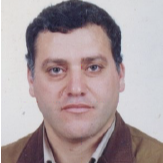
Hatem M. El-Sayed
Work place: Faculty of Computers and Information, Menofia University, Menofia, Egypt
E-mail: hatem6803@yahoo.com
Website:
Research Interests: Computer Science & Information Technology, Neural Networks, Computer Networks, Information Security, Information Theory, Information-Theoretic Security
Biography
Hatem M. El-Sayed obtained his B.S. and M.SC. (by research) both in Electrical Engineering from the Alexandria University , Faculty of Engineering , Egypt in 1990 and 1995 respectively. He obtained his Ph.D. degree in Electrical Engineering also from Alexandria University, Faculty of Engineering, Egypt in 2001 specializing in neural networks and applications. He is currently a professor in Information systems department, Faculty of Computers and Information, Information systems department, Faculty of Computers and Information, Menoufiya University, Egypt since 2004. He has worked on a number of research topics and consulted for a number of organizations. He has contributed more than 30+ technical papers in the areas of neural networks, Database applications, Information security and Internet applications.
Author Articles
Local Detectors and Descriptors for Object Class Recognition
By Faten A. Khalifa Noura A. Semary Hatem M. El-Sayed Mohiy M. Hadhoud
DOI: https://doi.org/10.5815/ijisa.2015.10.02, Pub. Date: 8 Sep. 2015
Local feature detection and description are widely used for object recognition such as augmented reality applications. There have been a number of evaluations and comparisons between feature detectors and descriptors and between their different implementations. Those evaluations are carried out on random sets of image structures. However, feature detectors and descriptors respond differently depending on the image structure. In this paper, we evaluate the overall performance of the most efficient detectors and descriptors in terms of speed and efficiency. The evaluation is carried out on a set of images of different object classes and structures with different geometric and photometric deformations. This evaluation would be useful for detecting the most suitable detector and descriptor for a particular object recognition application. Moreover, multi-object applications such as digilog books could change the detector and descriptor used based on the current object. From the results, it has been observed that some detectors perform better with certain object classes. Differences in performance of the descriptors vary with different image structures.
[...] Read more.Other Articles
Subscribe to receive issue release notifications and newsletters from MECS Press journals